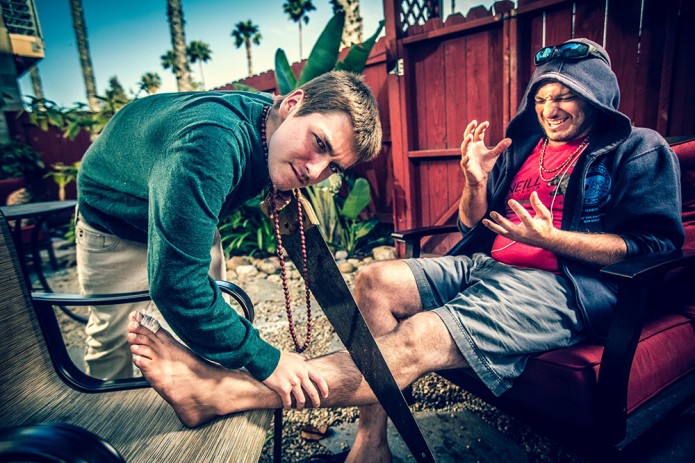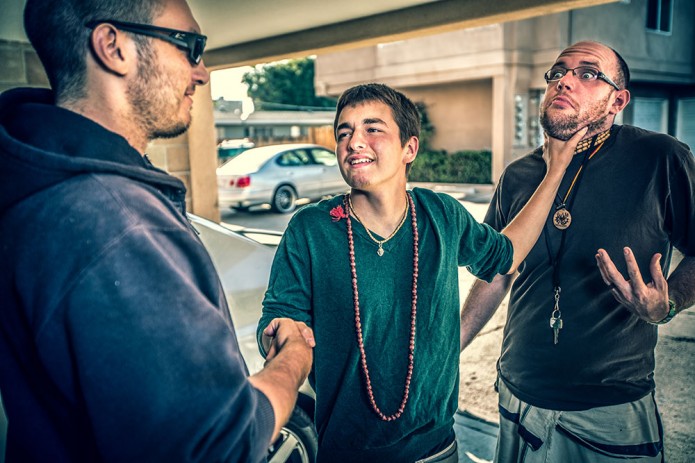ALL GLORIES TO LORD NRSIMHADEVA!
A Deity installation at New Vrindaban.
An article from the Brijabasi Spirit, 1986.
By Umapati dasa
Once, when Lord Nityananda took Jiva Gosvami on parikrama, They came to a place called Devapali, on the edge of the Navadvlpa district. Devapali had been well known in Satya-yuga, and Lord Nityananda told Jiva Gosvami that a temple of Lord Nrsimhadeva had once existed there.
After killing Hiranyakasipu, Lord Nrsimhadeva bathed in a river next to Ahovalam, a holy place in the mountains of South India. Rocks from this place are worshiped today as Nrsimha-tadiya, the paraphernalia of Lord Nrsimhadeva, and there are nine temples of Lord Nrsimhadeva in this region.
From Ahovalam, Lord Nrsimhadeva went to Devapali to rest on the bank of the MandakinI Ganga, accompanied by Lord Brahma and other demigods. Here Visvakarma, the celestial architect of the demigods, built jewelled houses for the demigods.
“Here is Surya’s house,” said Lord Nityananda, “and here is Brahma’s. Here is Ganesha’s, and here is Indra’s.
Sometime after the killing of Hiranyakasipu, a devotee came to live here. One day as he was bathing, he found a beautiful marble Deity of Nrsimhadeva killing Hiranyakasipu, with Praladha offering a garland. He established a large temple for the Lord and worshipped Him in great opulence. Nearby one can see the hills upon which the demigods resided, and a small lake marks the Mandakim river course.
Actually, the devotees of New Vrindaban had already decided to fulfill a long-cherished desire, so last October, Soma dasa, a devotee sculptor, started work on a Deity of Lord Nrsimhadeva.
Deities should not be confused with statues. The Scriptures say that the Deity is the Lord Himself, appearing in a form of wood or stone for the benefit of all. The materially conditioned living entity, who cannot see spirit but only wood or stone, can thus see the Lord and serve Him, and the self-realized soul, who indeed has spiritual vision, worships the Deity because he sees it as the Lord Himself.
His Divine Grace A.C. Bhaktivedanta Swami Prabhupada, the spiritual master who brought the Krsna consciousness movement to the Western world, compared the Deity to a mailbox. The mailbox is nondifferent from the post office, because whether a letter is deposited in a mailbox or at a post office, it will reach the same destination. But, he cautioned, it must be an authorized mailbox; an ordinary box will not do.
In this way, even a materialist can see that the Deity is nondifferent from the Lord because worship offered to the Deity bears the same fruit as worship offered to the Lord Himself—love of God. We cannot attain love of God by worshipping a statue, but if we worship the Deity according to the directions of the Vedic scriptures, the results are guaranteed.
Krsna is never alone. He is always with His devotees, and the liberated devotee can appear in Deity form, so Soma also started work on a Deity of Prahlada Maharaja.
Soma had been working the sculptures continuously, put the finishing touches on the Deities under supervision and with advice from Sampatkumar Bhattacarya, the head priest of the famous Tirupati temple in India.
But there was more to be done. Soma had made clay originals to be cast in resin. It was time for Kumar dasa, New Vrindaban’s casting specialist, to take over. Kumar made molds from Soma’s originals and poured in the resin. There was just one hitch: it had to work the first time or everything would be lost.
It worked. When the fateful day came, Kumar opened the mold to find a beautiful, 400-pound Deity of Lord Nrsimha, colored black with powdered West Virginia coal mixed in the resin. Prahlada Maharaja appeared the same day.
On January 6, 1986, Lord Nrsimhadeva and Prahlada were brought to New Vrindaban’s Temple of Understanding. They were greeted by devotees who had come from all over the world for the occasion. The appearance of the Lord and His pure devotee is always a joyous event, and the festivities—chanting, dancing, feasting— continued for three days.
Now, the devotees can look up and see Lord Nrsimhadeva, with His beloved devotee Prahlada Maharaja, as they chant the prayers in His honor:
“I offer my obeisances to Lord Nrsimhadeva, who gives joy to Prahlada Maharaja and whose nails are like chisels on the stonelike chest of the demon Hiranyakasipu.
“Lord Nrsimhadeva is here and also there. Wherever I go, Lord Nrsimhadeva is there. He is in the heart and is outside as well. I surrender to Lord Nrsimhadeva, the origin of all things and the supreme refuge.
“0 Kesava! 0 Lord of the universe! 0 Lord Hari, who have assumed the form of half-man half-lion! All Glories to You! Just as one can easily crush a wasp between one’s fingernails, so in the same way, the body of the wasp-like demon Hiranyakasipu has been ripped apart by the wonderful pointed nails on Your beautiful lotus hands.”









 We see that Srila Prabhupada also had a positive outlook. He was seeing how nice it is that there are devotees who are chanting. How nice that we have the deities. How nice is it, this spiritual life. Prabhupada asked, “What is better? Who has a better way of life than the devotees?” He said, “The devotees, they have the best of everything.” They live in the best places. It is true. Who lives in a castle?
We see that Srila Prabhupada also had a positive outlook. He was seeing how nice it is that there are devotees who are chanting. How nice that we have the deities. How nice is it, this spiritual life. Prabhupada asked, “What is better? Who has a better way of life than the devotees?” He said, “The devotees, they have the best of everything.” They live in the best places. It is true. Who lives in a castle?

 Sponsor Kalash
Sponsor Kalash
 The Holy Name everywhere!
The Holy Name everywhere!  The centre has over the years hosted numerous events and functions and now the devotees of Krishna!
The centre has over the years hosted numerous events and functions and now the devotees of Krishna!  With Devakinandan prabhu
With Devakinandan prabhu  Vaiyasaki Das: I am traveling the world presenting Kirtan Rasa in the tradition of Sri Chaitanya Mahaprabhu. I am an initiated disciple of His Divine Grace A.C. Bhaktivedanta Swami who introduced Krishna Kirtan to the western world in 1965 in New York City.
Vaiyasaki Das: I am traveling the world presenting Kirtan Rasa in the tradition of Sri Chaitanya Mahaprabhu. I am an initiated disciple of His Divine Grace A.C. Bhaktivedanta Swami who introduced Krishna Kirtan to the western world in 1965 in New York City. 
